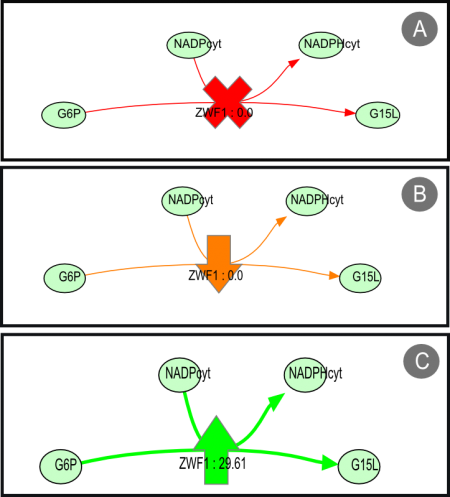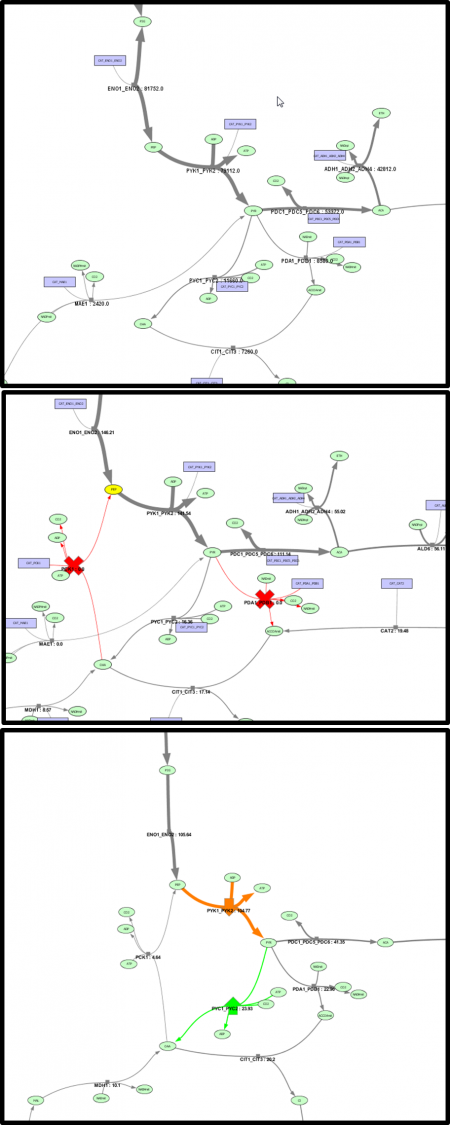(→Simulation overlap) |
(→Simulation overlap) |
||
| Line 23: | Line 23: | ||
Finally genetic modifications are also represented as shown below:<bR> | Finally genetic modifications are also represented as shown below:<bR> | ||
[[Image : GeneticConditions.png | 450px]] | [[Image : GeneticConditions.png | 450px]] | ||
| + | <br> | ||
where | where | ||
<b>A</b> is a reaction knock-out | <b>A</b> is a reaction knock-out | ||
<b>B</b> reaction under-expression | <b>B</b> reaction under-expression | ||
<b>C</b> reaction over-expression | <b>C</b> reaction over-expression | ||
| − | + | <br> | |
Below are some examples: | Below are some examples: | ||
[[Image : C4 overlaps.png | 450px]] | [[Image : C4 overlaps.png | 450px]] | ||
Revision as of 14:41, 18 March 2014
The visualization plugin has available some filters and overlaps that will alow the user to get more information about the network and interpret results from OptFlux operations.
Visual Filters
Visual filters can be performed by selecting them in the filters panel (more about the panel in the user interface page).
Each overlap can also have a set of filters associated with it, which will facilitate viusalizing parts of interest in the network.
Overlaps
There are several kinds of overlaps. In this section they will be described.
Simulation overlap
A simulation overlap is built from a steady state simulation result from OptFlux.
This will allow the user to visualize, in the network, the flux distribution in the network. The thickness of the edges will be changed according to the value of the flux, meaning that reactions with high flux values will have a larger thickness than edges that belong to a reaction with a lower flux value.
The direction of the reversible reactions is also changed according to the flux, to give a better notion to the user the paths that the flux is taking. The label of the reactions also change, presenting the value of the flux.
Finally genetic modifications are also represented as shown below:

where
A is a reaction knock-out
B reaction under-expression
C reaction over-expression
Below are some examples:
